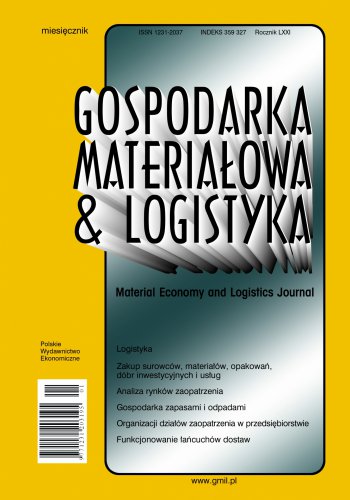Budowanie więzi międzyorganizacyjnych w opinii firm z branży motoryzacyjnej
W dzisiejszych czasach firmy muszą próbować tworzyć ada-
ptacyjne struktury sieciowe chcąc przetrwać na konkuren-
cyjnym rynku. Istnieje wiele badań potwierdzających korzy-
ści z podejścia opartego na współpracy w ramach łańcuchów
dostaw. Jednocześnie większość firm ma trudności w budo-
waniu takich łańcuchów dostaw. Szczególnie dotyczy to firm
małych i średnich. W artykule podjęta została tematyka re-
lacji międzyorganizacyjnych oraz ocena wybranych elemen-
tów współpracy wśród firm z branży motoryzacyjnej. Poka-
zane są wybrane czynniki kształtowania relacji w łańcu-
chach w ocenie przedsiębiorców.
Bibliografia
Cao, Mei & Zhang, Qingyu. (2011). Supply Chain Collaboration: Impact on Collaborative Advantage and Firm Performance. Journal of
Operations Management, 29, s. 163–180.
Chen, I. J., Paulraj, A., (2004). Towards a theory of supply chain management: the constructs and measurements. Journal of Operations
Management, 22, s. 119–150.
Dyer, J. H., Singh, H., (1998). The relational view: cooperative strategy and sources of interorganizational competitive advantage. Acade-
my of Management Review, 23(4), s. 660–679.
Fawcett, S. E., Fawcett, A. M., Watson, B. J., & Magnan, G. M. (2012). Peeking inside the black box: Toward an understanding of supply
chain collaboration dynamics. Journal of Supply Chain Management, 48(1), s. 44–72.
Fedorowicz, J., & Ghosh, A. (2008). The role of trust in supply chain governance. Business Process Management Journal, 14(4), s. 453–470.
https://doi.org/10.1108/.
Fliedner, G. (2003). CPFR: An emerging supply chain tool. Industrial Management and Data Systems, 103(1–2), s. 14–21.
Hausman, A., & Johnston, W. J. (2010). The impact of coercive and non-coercive forms of influence on trust, commitment, and complian-
ce in supply chains. Industrial Marketing Management, 39, s. 519–526.
Kampstra, R. P., Ashayeri, J., and Gattorna, J. L. (2006). Realities of supply chain collaboration. International Journal of Logistics Mana-
gement, 17(3), s. 312–330.
Katkalo, V. S., Pitelis, C. N., & Teece, D. J. (2010). Introduction: On the nature and scope of dynamic capabilities. Industrial & Corpora-
te Change, 19(4), s. 1175–1186.
Saban, K. & Mawhinney, J. R. & Drake, M. J., (2017). An integrated approach to managing extended supply chain networks, Business Ho-
rizons, 60(5), s. 689–697.
Simatupang, T. M., Sridharan, R., (2005). An Integrative framework for supply chain collaboration. International Journal of Logistics Ma-
nagement 16(2), s. 257–274.
Soosay, C., Hyland, P., Ferrer, M., (2008). Supply chain collaboration: capabilities for continuous innovation. Supply Chain Manag. 13(2),
s. 160–169.
Tan, K. C., Lyman, S. B., & Wisner, J. D. (2002). Supply chain management: A strategic perspective. International Journal of Operations
& Production Management, 22(6), s. 614–631.
Tan, K. H., Wong, W. P., & Chung, L. (2016). Information and knowledge leakage in supply chain. Information Systems Frontiers, 18,
s. 621–638.
Vázquez, R., Iglesias, V., & Álvarez-González, L. I. (2005). Distribution channel relationships: The conditions and strategic outcomes of
cooperation between manufacturer and distributor. International Review of Retail, Distribution, and Consumer Research, 15(2),
s. 125–150.
Wierzbiński B., (2019). Zasoby niematerialne w procesie tworzenia przewag konkurencyjnych małych i średnich przedsiębiorstw przygranicz-
nych, Rzeszów: Wydawnictwo Uniwersytetu Rzeszowskiego.

